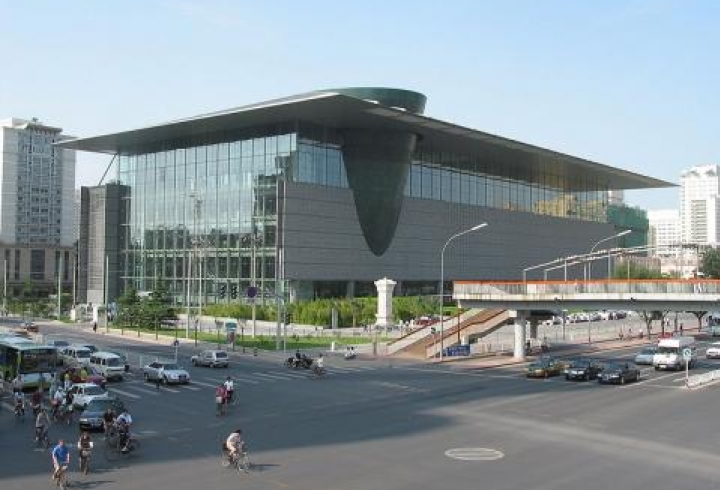UNESCO CREATIVE CITIES BEIJING SUMMIT
20-23 OCTOBER 2013
Beijing, People’s Republic of China
Beijing City of Design Plaza
The UNESCO Summit of Creative Cities, held in Beijing on 20-22 October 2013, highlighted the importance of creativity for urban sustainability and for sustainable development. The pace of urbanization will see almost 9.2 billion people living in cities by 2050. This is why we must understand better how to foster new forms of innovation to tackle urban challenges in ways that are just, equitable and inclusive. The Beijing Summit took up this challenge and set a new milestone in shaping new avenues of cooperation between members of the UNESCO Creative Cities Network.
The Agenda adopted by the Beijing Summit de ned creativity as “a special kind of renewable resource and human talent, based on innovation.” On this basis, the participants at the Mayors’ Roundtable Meeting committed to deepen cooperation, learning and sharing between Creative Cities in all regions, in order to accelerate social, economic and cultural development. At a time of economic and technological globalization, they reaf rmed the importance of preserving and maintaining cultural diversity, working through the UNESCO Creative Cities Network.
These commitments highlighted the importance of the UNESCO Network as a platform for medium and long term planning — at the regional, national and local levels. It is in the cities that bottom-up partnerships for culture-driven and culture-enabled development can be most effective and sustainable.
The links between culture and development has long been recognized, but only recently have they become integrated into international development efforts. The Outcome Document of the Rio+20 Conference stated that “all cultures and civilizations can contribute to sustainable development”. Building upon this, the Final Declaration of the Hangzhou International Congress, “Culture: Key to Sustainable Development” (Hangzhou, China, 15-17 May 2013), highlighted culture as a critical resource for sustainable urban development and management, recalling that “a vibrant cultural life and the quality of urban historic environments are key for achieving sustainable cities.” Most recently, the 3rd edition of the Creative Economy Report (UNDP/UNESCO 2013) explored the fundamental roles of creativity and culture for the pursuit of inclusive, equitable and sustainable growth.
More and more, we are seeing culture recognized as an enabler and a driver for social inclusion and sustainable development. Across the world, countries are betting on culture and creativity as powerful renewable energies in a new age of limits, and they are focusing on cities as strategic platforms for moving forward.
This is the importance of the UNESCO Creative Cities Network, created in 2004 to develop the cultural assets and the impact of cultural industries in cities, by focussing on seven areas — design, literature, gastronomy, crafts, media arts, music and lm. The Network seeks to foster cooperation among cities having identi ed creativity as a strategic factor for sustainable development, working within the framework of partnerships between the public and private sectors, and with professional organizations, communities, civil society, and cultural institutions in all regions of the world.
Generously hosted and supported by the Beijing Municipality and the Chinese Government, the Beijing Summit brought together high-level representatives from the Creative Cities Network, members of regional and state administrations, along with policymakers, academics and researchers. By meeting in Beijing, UNESCO City of Design, participants highlighted the essential role played by design in promoting and supporting creative economies. In this respect, three of the ve Chinese members of the Network are Cities of Design — with Shenzhen and Shanghai joining Beijing.
The Beijing Summit showed China’s leadership in breaking new ground for international cooperation. It underscored also the commitment of the Chinese Government to mobilizing new sources of creativity and innovation and to building platforms for harmonious and sustainable development. China is leading from the front in making culture a pillar of its development strategy — one of the drivers, in the words of President Xi Jinping, of the “Chinese dream.”
At this time of global change, I believe all countries need to recognise the power of culture for designing sustainable solutions to common challenges. This is especially important in the context of the new sustainable development agenda that States are shaping to follow 2015. Cities have key roles to play here, as drivers of sustainability, as platforms for inclusive development and as bridges to other regions of the world. This was the message of the Beijing Summit, and it has never been more important.
Irina Bokova
Director-General of UNESCO

